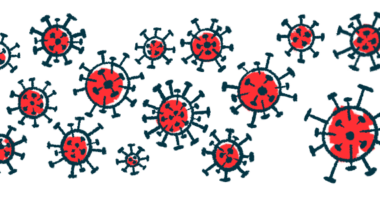A Struggle With PH and Comorbidities

Living with pulmonary hypertension (PH) requires a great deal of self-awareness and analysis to distinguish between PH symptoms and treatment side effects. This effort becomes even more challenging when comorbidities come into play.
Roger Bliss, a Pulmonary Hypertension News forums member, provides an example of such challenges. He often posts about living with PH as well as chronic lymphocytic leukemia (a cancer of the blood and bone marrow), small lymphocytic lymphoma (a blood cancer), and celiac disease (a gluten-sensitive condition).
I interviewed Roger, 68, via email regarding one particular health concern that influences all his conditions.
Roger was diagnosed with leukemia in 2015. He had shortness of breath and was treated for chronic obstructive pulmonary disease for several years. Later, there was concern that maybe his lymph nodes were growing and closing off his windpipe.
In November 2020, a cardiologist noted that Roger’s electrocardiogram didn’t look right. When a stent was placed, a right-heart catheterization was conducted, and that provided the PH diagnosis.
Battling ‘water on the lungs’
One of Roger’s many struggles is battling pleural effusion, or “water on the lungs,” which requires having his lungs drained.
The process is called thoracentesis, and the first time Roger had it done, they asked him to fast and arrange for someone to drive him home. “I guess some folks freak out and need sedation,” Roger said.
The process first numbs the back, then uses a sonogram to insert a needle between the ribs into the pleural sac.
After removing two liters of fluid in his first session, doctors figured he could handle the procedure, so they lifted the fasting and driving requirements for future draining.
I asked Roger if the fluid is caused by his PH, leukemia, or both. The answer is, of course, complicated.
“The fluid has cancer cells in it, but any fluid they take out of me will have them,” Roger said. “Nobody has a clue what causes it. That is what three different departments, including my PH specialist, are trying to figure out now.”
Problems and solutions
Roger and his wife, Mary Ellen, live in Alaska during the summer, where he has a gravel trucking business. In November, they head to Arizona, where they stay in an RV, which they fondly refer to as “the tin tent.”
They seem to enjoy living between two places — except for the inconvenience of Roger’s monthly lung-draining procedures.
The process was time-consuming, Roger said, especially when he was home in Alaska. It was a tiring cycle of getting an X-ray to check his fluid levels, having his lungs drained, resting for two days, meeting with the doctor to see how things went, and two weeks later starting the process all over again.
Eventually, his doctor asked if getting his lungs drained every month was getting old. “I always joked with my buddies back home that I needed a faucet installed so I can drain it myself,” Roger said.
Ask and you shall receive — sort of.
Roger credits the University of California, San Diego for being on the cutting edge of technology. The doctors there offered him an option to drain his lungs from the comforts of home, and he was more than happy to give it a try.
On Jan. 5, Roger had a tube called a PleurX catheter placed in his chest. The procedure wasn’t much different from what he was used to from his thoracentesis. The area where the needle was inserted was numbed, and he was still sore for a few days — but not bad enough to take anything for the pain.
Roger made a point of clarifying that the tube isn’t in his lung. “The fluid gathers in the sac around the lung, pushing it up, making it smaller,” he said, “and the smaller it gets, the harder it gets to breathe.”
Mary Ellen has drained Roger’s lungs multiple times since the catheter was placed. They rely on a helpful YouTube video, “BD PleurX Patient Education — Draining Fluid,” that thoroughly explains the steps to take when doing this from home.
“The draining process is like doing a math problem. Do everything in the correct order and the right way, or you are going to mess something up,” Roger said.
Looking ahead
Aside from a minor infection caused by a small leak and challenges bandaging the site properly, Roger said, the process is getting easier. His primary concern now is ensuring the pharmacy supplies him with enough drainage kits to get by.
Roger said the jury is still out about draining his lungs from home. “It will probably be some time before I can give it a thumbs-up or -down, but so far, it seems better doing it at home.”
“No more X-rays,” he added.
Join the PH forums to follow Roger’s journey, share your own, and hear from other members who are living with PH and coexisting conditions.
Note: Pulmonary Hypertension News is strictly a news and information website about the disease. It does not provide medical advice, diagnosis, or treatment. This content is not intended to be a substitute for professional medical advice, diagnosis, or treatment. Always seek the advice of your physician or other qualified health provider with any questions you may have regarding a medical condition. Never disregard professional medical advice or delay in seeking it because of something you have read on this website. The opinions expressed in this column are not those of Pulmonary Hypertension News or its parent company, Bionews, and are intended to spark discussion about issues pertaining to pulmonary hypertension.









Leave a comment
Fill in the required fields to post. Your email address will not be published.